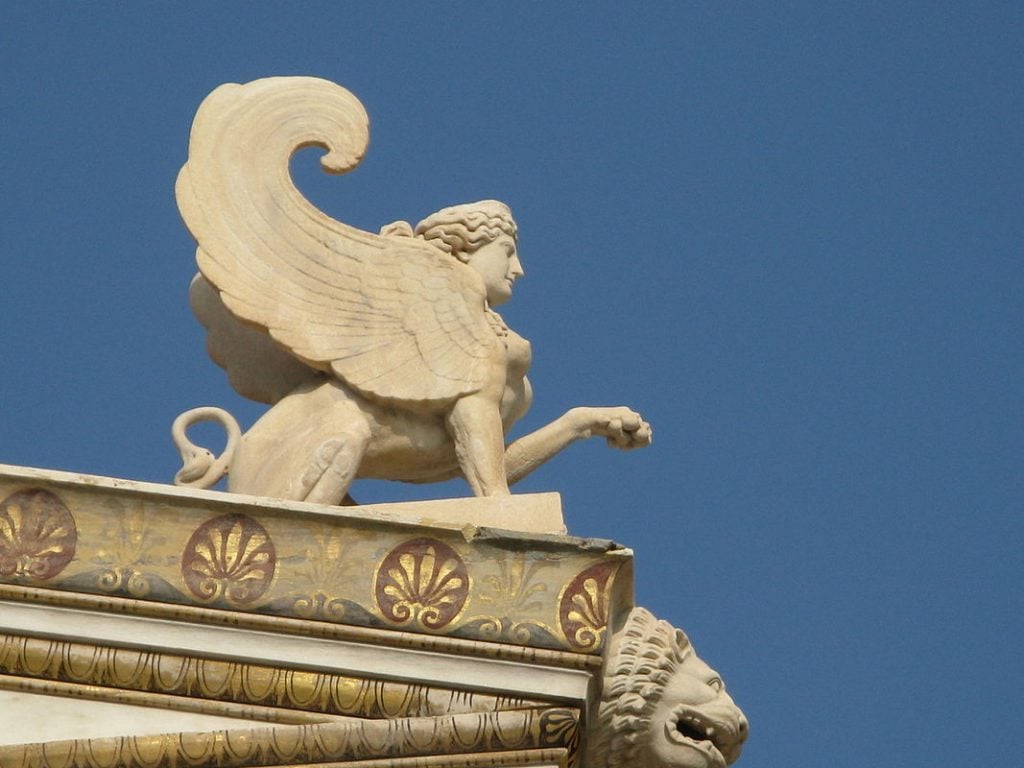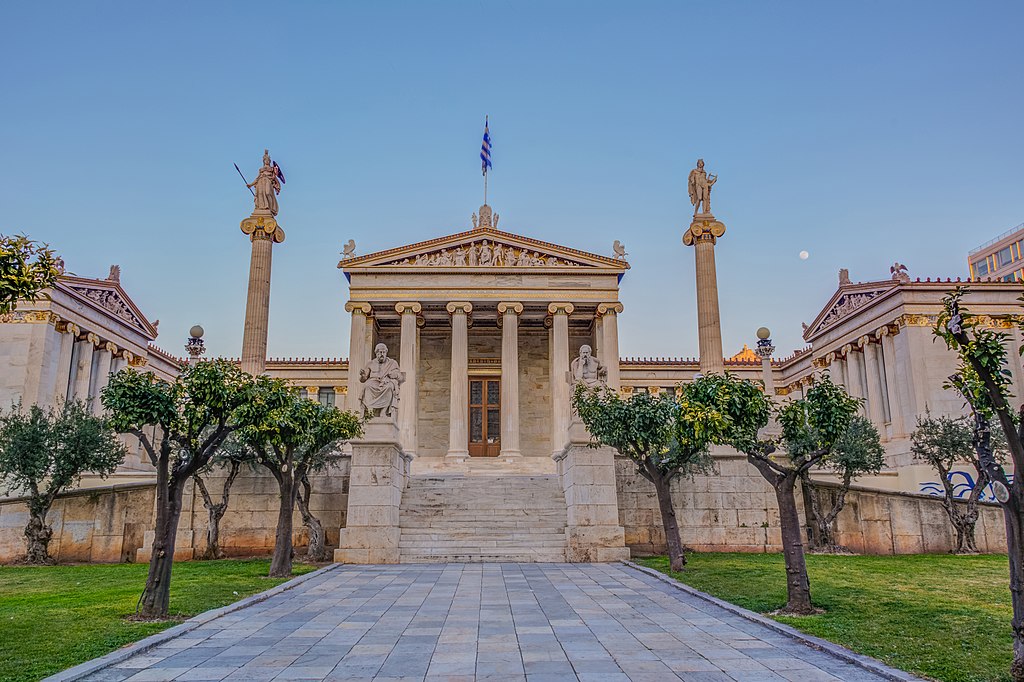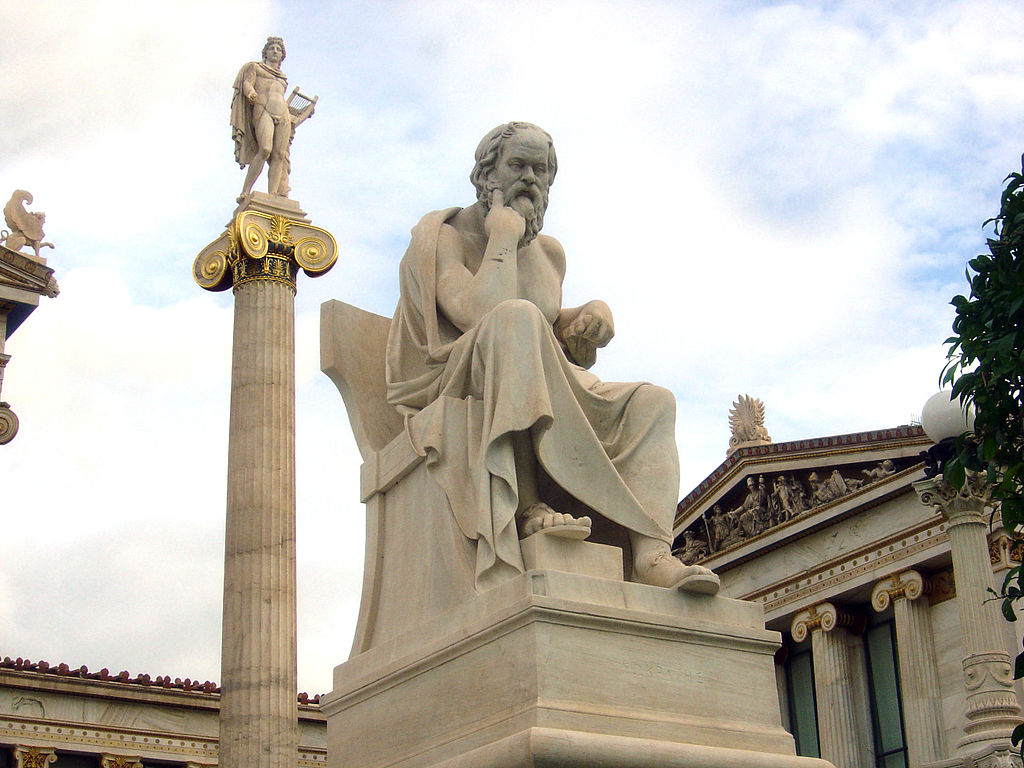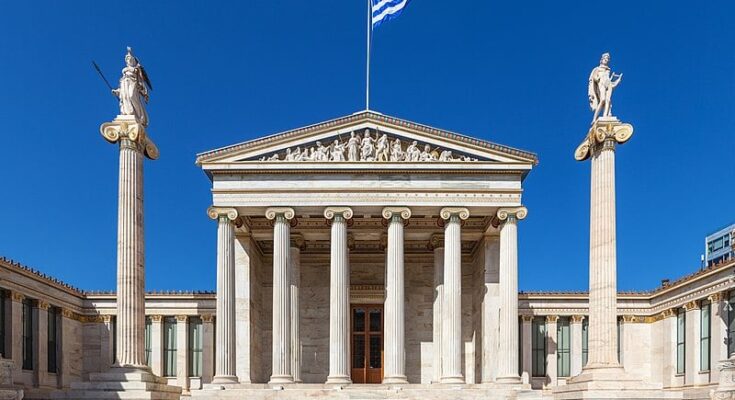The Academy of Athens is lauded around the world as a marvelous example of neoclassical architecture, or architecture that draws on themes and aesthetics from antiquity, as filtered through a nineteenth-century eye.
Located in the center of the city and modeled after an ancient Greek temple, the building serves as a link between Athens’ ancient past and fast-paced present.
The beautiful structure also houses the nation’s most senior research institution.
When walking along the central Panepistimiou street, visitors are met with a splash of ancient Greek aesthetics amidst the bustle of the modern city when they spot the Academy.
Breathtaking columns reaching up to the city’s famed blue sky, an intricately-carved sculptural pediment, and ancient Greek statuary lining the building instantly transport the viewer back into the past.

Designed in 1859 by Danish architect Theophil Hansen, the Academy is part of the neoclassical architect’s widely praised “Trilogy” of buildings, which includes the adjacent National Library and university.
After years of political tumult considerably delayed the building’s construction, the Academy was finally completed in 1885.
Hansen’s monumental structures were funded by Greek-Austrian businessman and financier Simon Sinas, who spent 2.8 million gold drachmas on the magnificent building.
Sinas invested much of his wealth in supporting major construction and development projects in the newly-formed state’s capital city of Athens.

Building Greece’s capital
After the Greek War of Independence from the Ottomans ended in 1830, and the Bavarian King Otto was placed on Greece’s throne two years later, the nascent country needed a new capital.
Although the city of Nafplio in the Peloponnese had been serving as Greece’s de-facto capital for many years and therefore had developed the infrastructure required of a European capital, it didn’t have the same glorious ancient history as Athens.
Otto, like most European men of the upper classes at the time, was a student of the Classics, having learned the history, culture, and language of ancient Greece and Rome.
His love for Greece’s ancient history drew him to Athens, and, in 1834, he chose what was then a town of four thousand people as the capital of his kingdom.
Hoping to build the small town of shepherds into a blossoming European capital, King Otto commissioned the world’s best neoclassical architects to construct the modern city of Athens.
Many of the city’s most famous buildings, including Hansen’s trilogy, the Parliament buildings, and many old homes in Plaka were built during this period of large-scale construction.

The art of the Academy of Athens
A major landmark for the city, the Academy is known internationally for its exceptional neoclassical style.
Flanked by towering columns topped with statues of Athena and Apollo, the impressive building is modeled after the Parthenon. Its façade is lined with Doric columns that support its iconic triangular pediment.
The sculptural pediment, along with the other impressive statues adorning the building, including the magnificent seated figures of Plato and Socrates, were crafted by Greek sculpture Leonidas Drosis.

Much like the outside of the structure, its interior is embellished by breathtaking works of art. The main conference hall of the Academy is lined with exceptional murals by German painter Christian Griepenkerl.
Griepenkerl’s works recall themes from the myth of Prometheus, a favorite subject of the acclaimed painter.
The pedimentary sculpture depicts the birth of Athena, the goddess of wisdom. The subject matter of the sculpture, along with the statues of Plato and Socrates, are fitting ornaments for the building that houses Greece’s most prominent center for research and knowledge.

However, at the time of the building’s completion, Greece’s national academy had not yet been established.
Initially, the building housed the some of the country’s most significant museums, including the Numismatic and Byzantine museums. Later, it housed the state archives.
When the country’s national academy was finally formed in 1926, it found its home in Hansen’s neoclassical masterpiece—the Academy of Athens.



